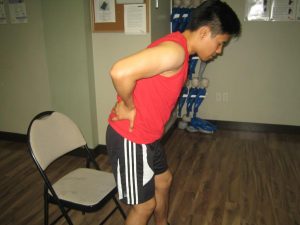Flank pain is described as discomfort in the upper abdomen or back and the sides. It usually develops in the region beneath the ribs and above the pelvis. In most circumstances, the pain is intense on one side of the body.
https://www.youtube.com/watch?v=yXleLhGFkDI
Many individuals experience flank pain at least once in their life and the discomfort is typically brief. Nevertheless, persistent or severe flank pain might be an indication of a serious health condition such as urinary tract infection or dehydration. It might even be due to kidney stones or another issue affecting the kidney.
Even if flank pain is frequently an indication of a kidney issue, it might also be due to other health conditions if it manifest with other symptoms. A doctor should be consulted if an individual experiences lasting or intense pain particularly with other symptoms.
Usual causes of flank pain
Some of the typical causes of flank pain include the following:
- Kidney abscess
- Kidney infection
- Shingles
Many individuals experience flank pain at least once in their life and the discomfort is typically brief. - Bladder infection
- Kidney stones
- Arthritis particularly the spinal type
- Tietze’s syndrome
- Muscle spasms
- Disc disease
- Spinal fracture
- Pinched nerve in the back
How is it diagnosed
When a doctor is consulted, the underlying cause of the flank pain is determined by asking several questions such as the location of the pain, quality of pain, frequency and other accompanying symptoms.
The doctor will request blood tests and imaging tests to pinpoint the cause of the flank pain. The imaging tests such as an X-ray or ultrasound will allow the doctor to view deep within the body. These tests will reveal issues in the tissues, organs and muscles. In such tests, the doctor might inject a contrast dye into one of the veins to improve the quality of the images and allow easier identification of any blockage in the organs or blood vessels. The other diagnostic tests that might be recommended include the following:
- Cystoscopy
- Abdominal CT scan
- Urine culture
- Urinalysis
Management for flank pain
Getting enough rest is the main treatment for any form of pain. In minor cases, it usually resolves with a combination of rest and physical therapy. The doctor might also recommend specific exercises for quick relief from the muscle spasms.
Depending on the exact cause of the flank pain, the doctor will provide the appropriate treatment.
Preventive measures
- Drink at least 8 glasses of water every day
- Limit the intake of alcoholic beverages
- Exercise regularly at least 3 times every week
- Eat a diet that is mainly comprised of fruits, vegetables and lean proteins


